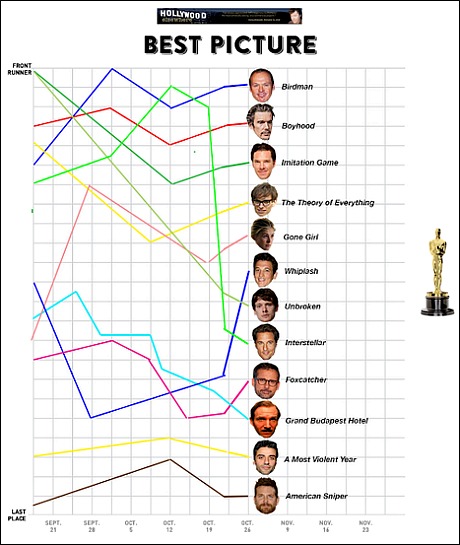J.C. Chandor‘s A Most Violent Year (A24, 12.31), which screened last night at the Dolby on Hollywood Boulevard, is a smartly written, super-gripping, edge-of-your-seat New York melodrama about a driven but principled businessman (Oscar Isaac), married to the tough daughter of a jailed crime boss (Jessica Chastain), who’s struggling to keep his heating-oil business afloat as he deals with truckjacking, an unstable loan situation and possible prosecution for financial impropriety. It’s not some ultra-violent, blood-smeared thing about relentless shoot-outs and punch-outs and squealing tires. The title definitely misleads. But it’ll grab you and then some, especially if you’re over 15 or 16. If you’re semi-educated and over 25 or 30, pig heaven! Especially if you’ve been watching films all your life or…you know, if you’re an HE regular.
Every performance delivers although I wish more scenes and a grander, darker arc had been given to Chastain, who has three or four times the role here that she does in Interstellar, as well as to Albert Brooks, who scores as Isaac’s droll, even-tempered, slightly corrupt attorney. And every scene has been pruned to the bone, and almost every line is note-perfect. A Most Violent Year is not flawless but it’s damn close to that, at least for my money.
Those looking for visceral thrills (and let’s face it — a lot of apes out there are going to see this thing expecting an adrenaline-fueled ride with a lot of blood on the pavement) should know that A Most Violent Year has one of the best car, running-on-foot and subway chase sequences in a dog’s age or maybe decades. It doesn’t quite match the subway-car chase sequence in The French Connection but it definitely belongs in the same ballpark, and that means it’s been shot and cut so that you can actually follow the action. This sequence alone is worth the price, but there’s a lot more to savor and sink into.
And the sound mix! I realized last night that I’ve been more traumatized by Interstellar‘s soupy sound than I knew because as the lights went down I muttered to myself, “Please, God…don’t make this as murky and bassy and hard to fucking understand as Interstellar. I just want to hear the dialogue…please.” And I did! Every word, phrase and sentence was clear and crisp. I didn’t miss a damn thing.





